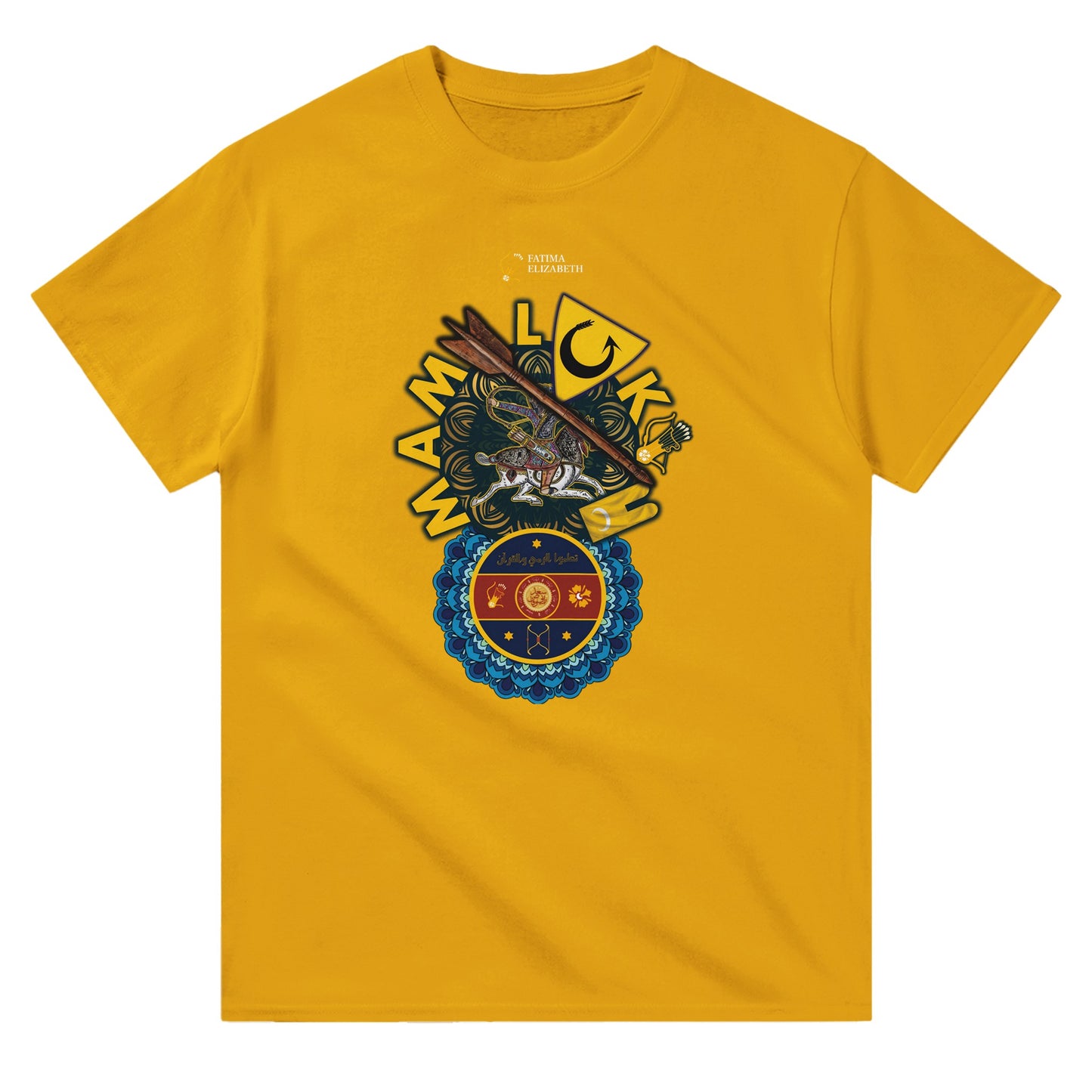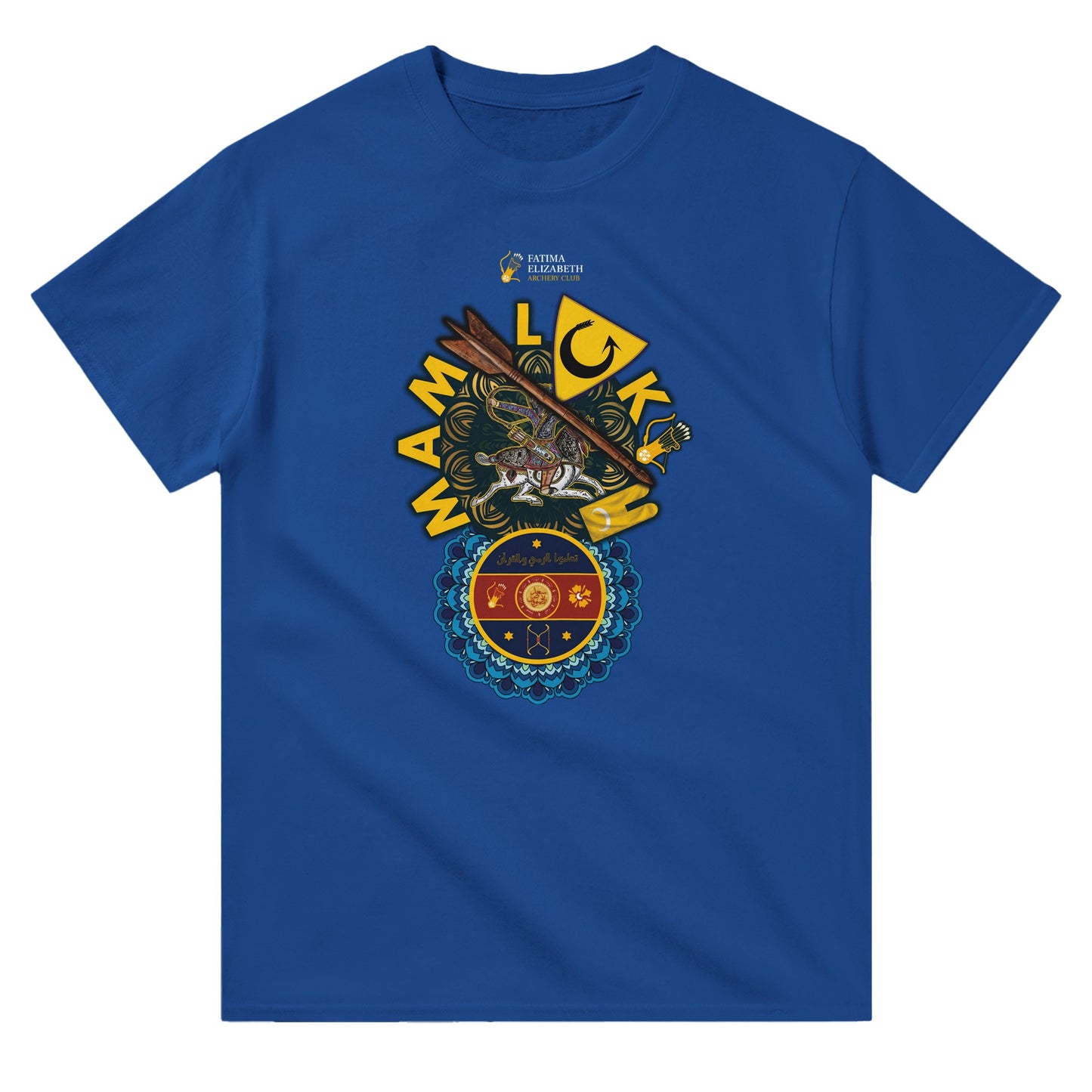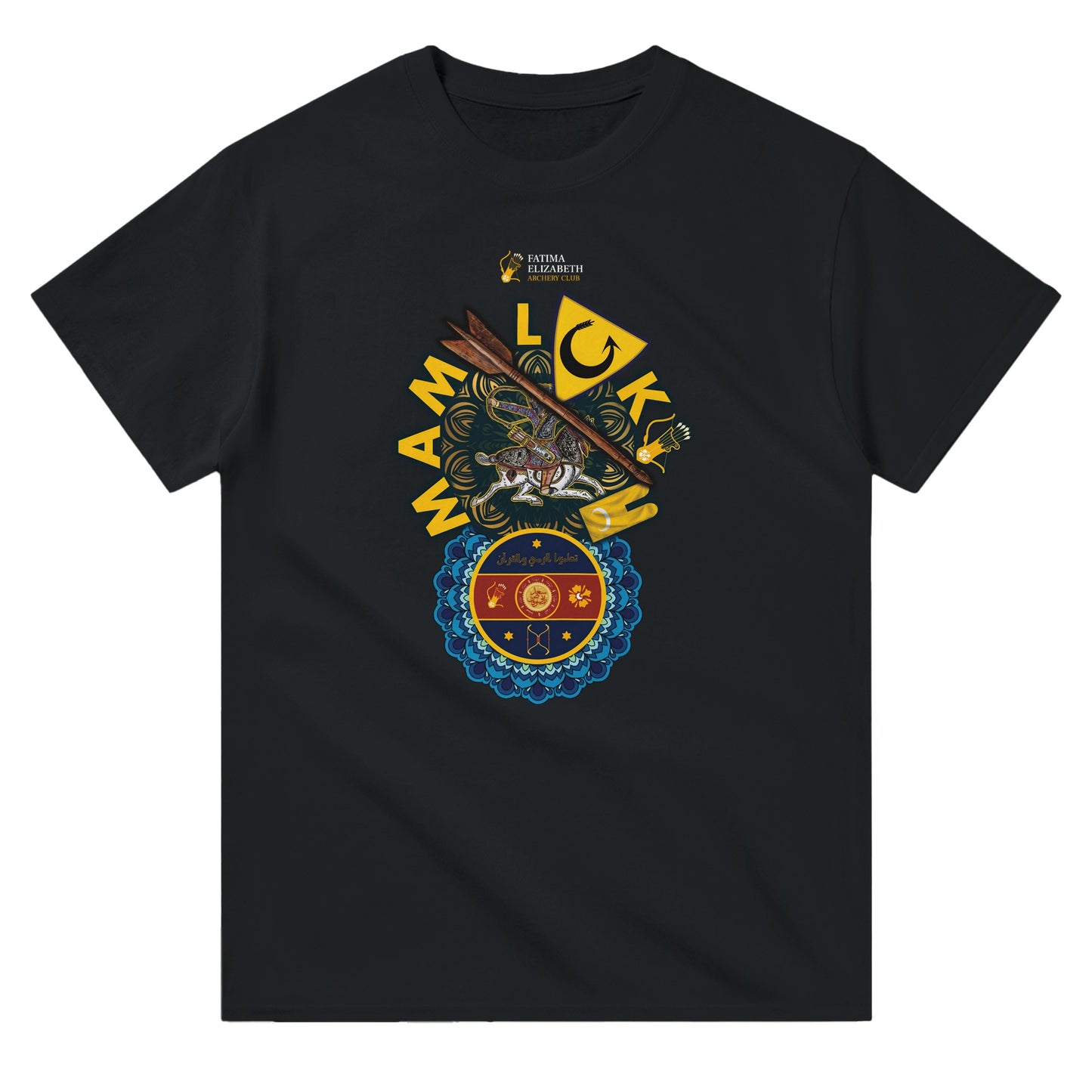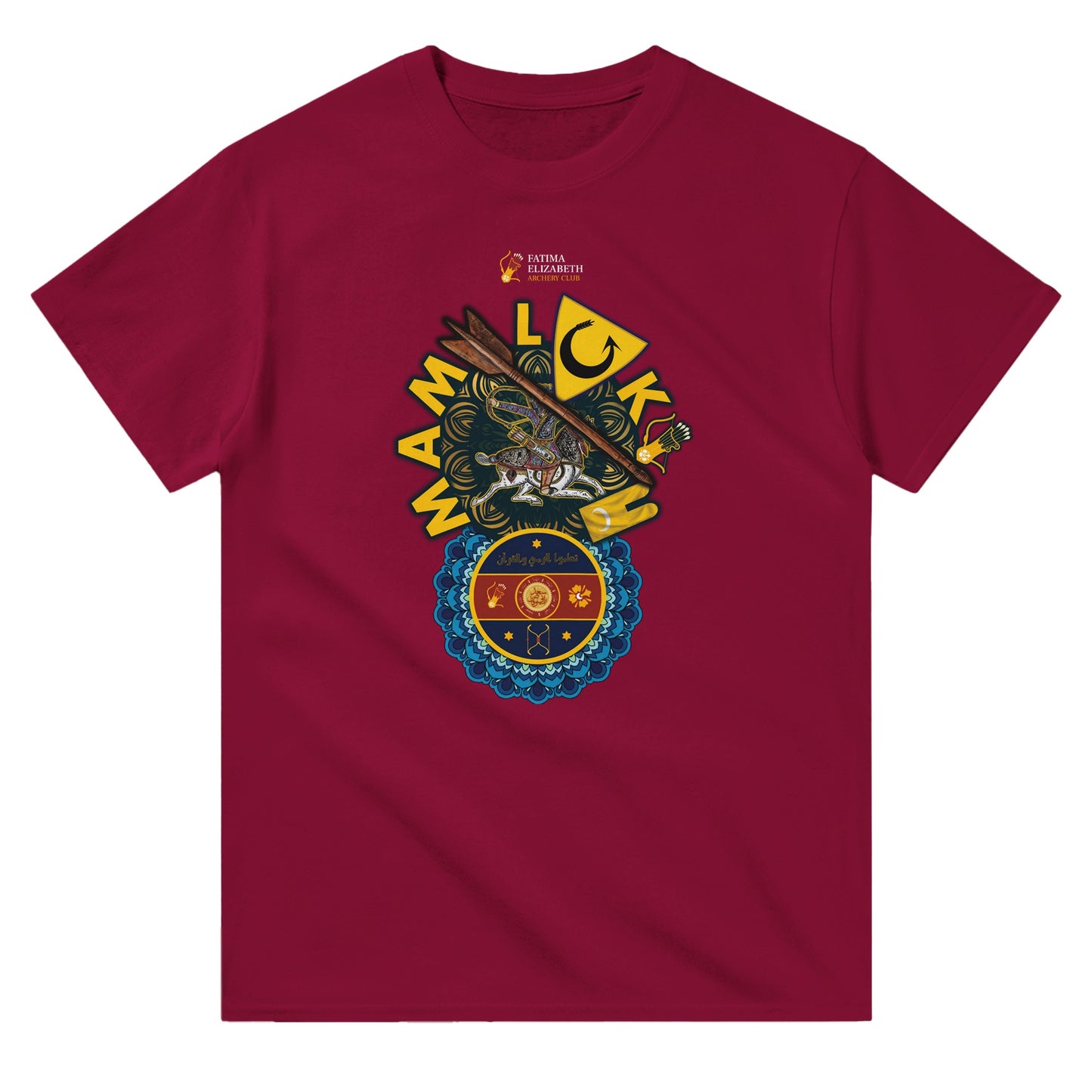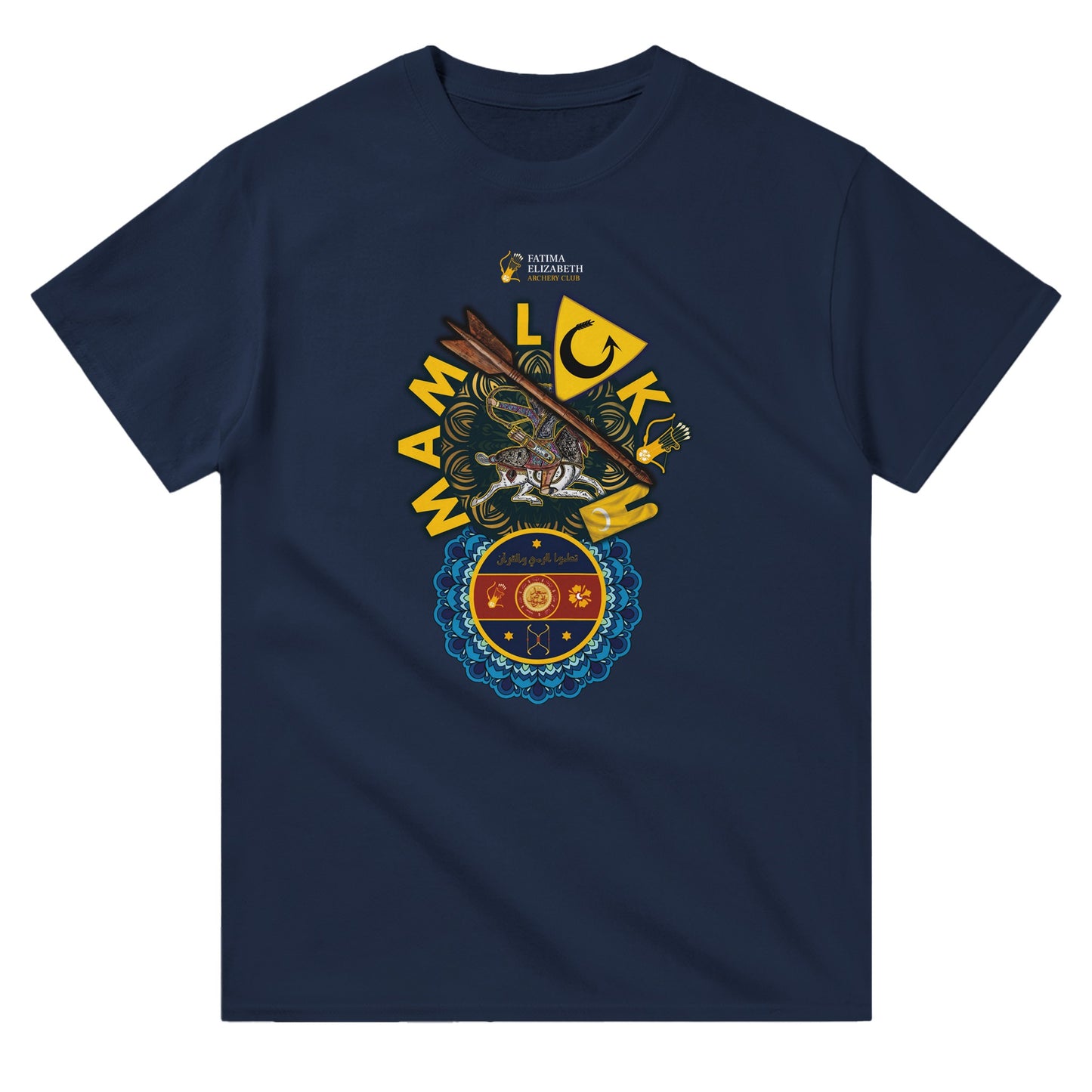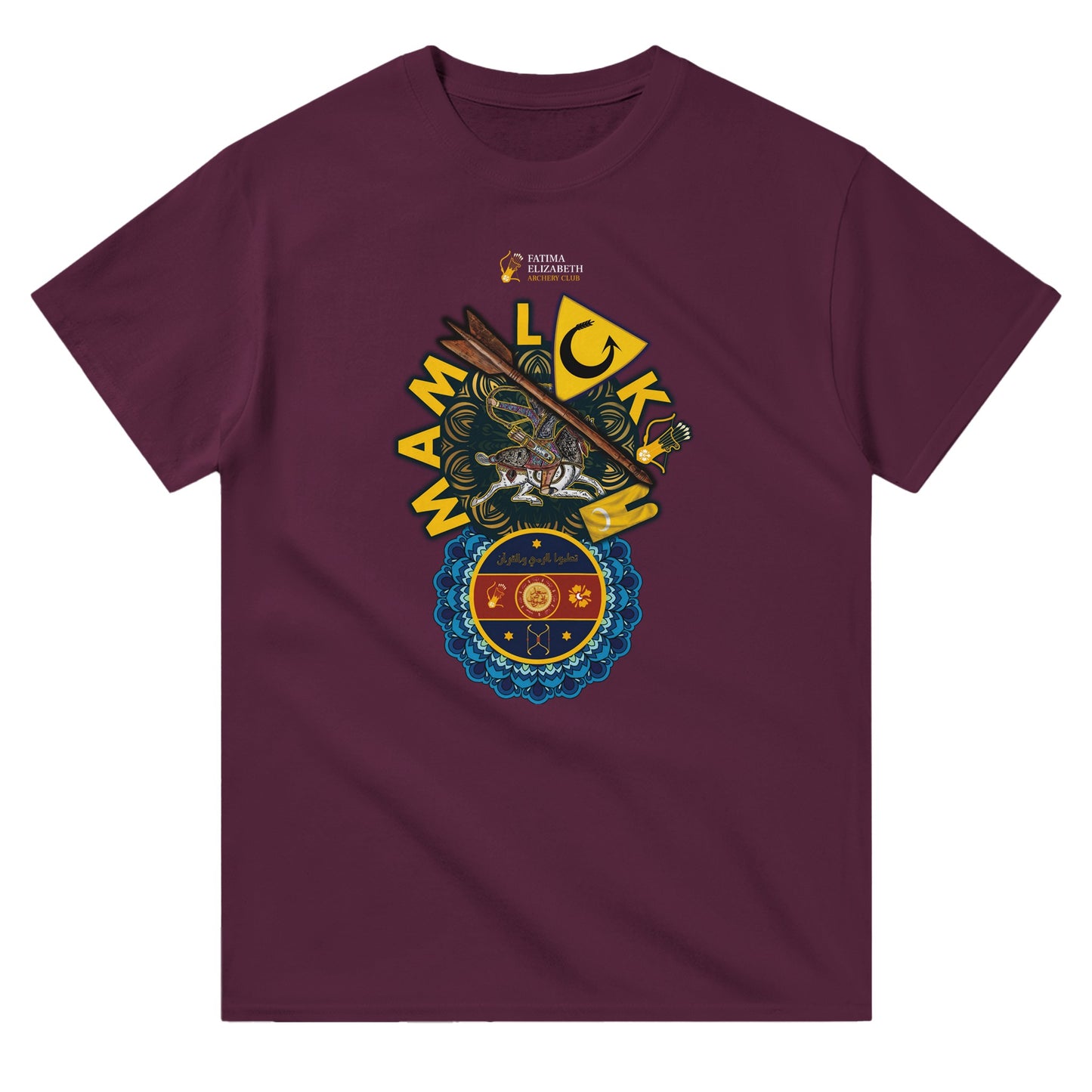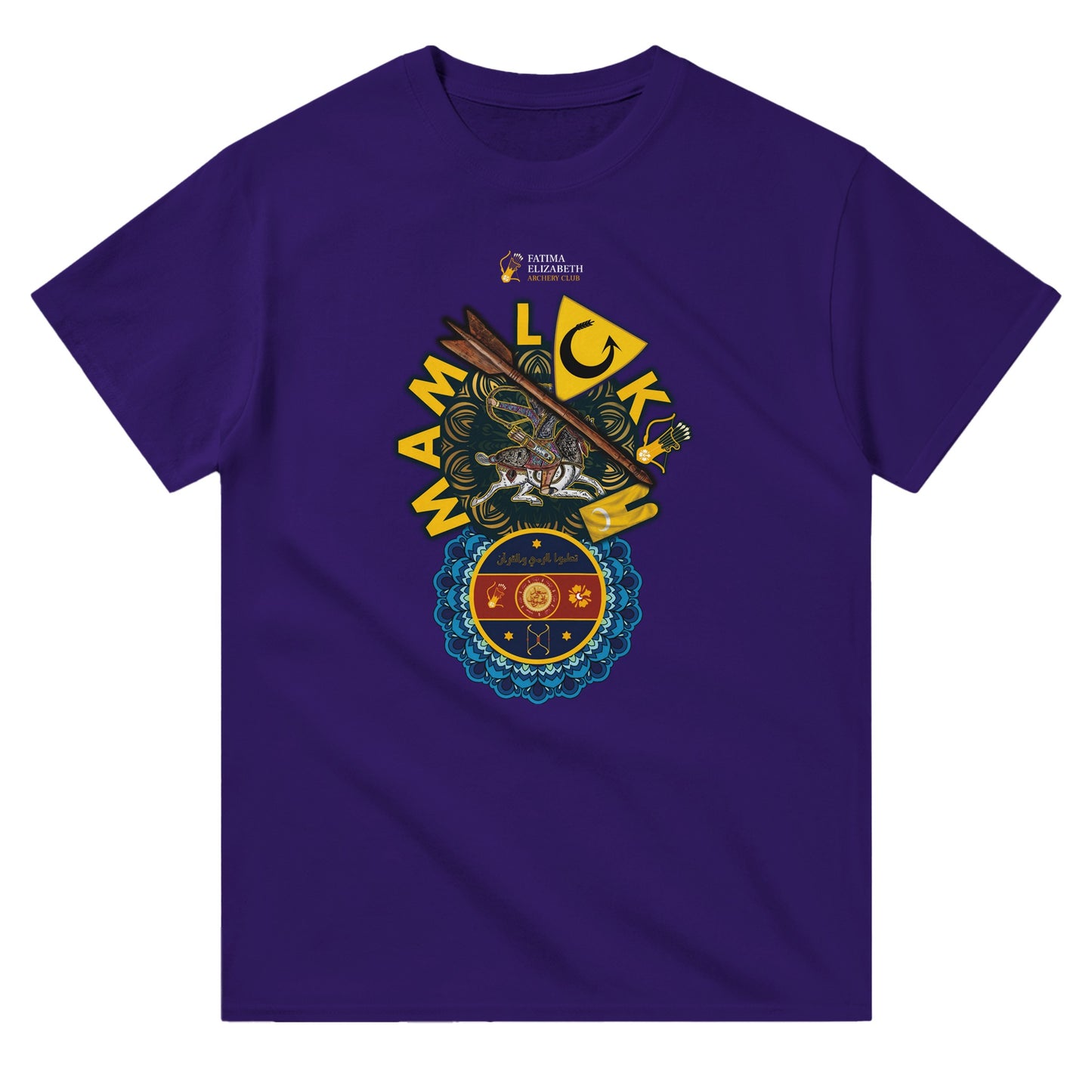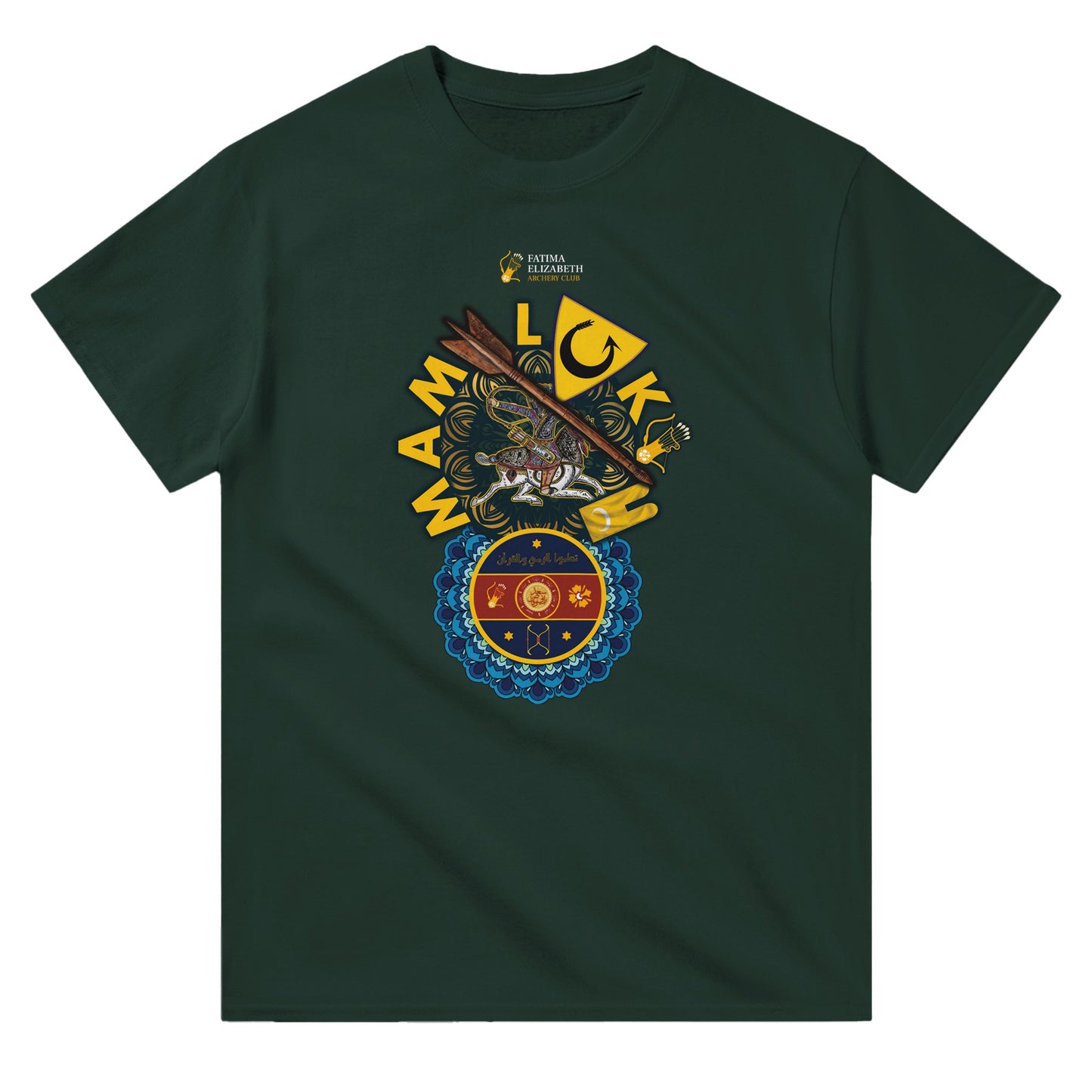1
/
of
1
aljamaal.online
MAMLUK - Heavyweight Unisex Crewneck T-shirt | Gildan® 5000.
MAMLUK - Heavyweight Unisex Crewneck T-shirt | Gildan® 5000.
Regular price
£11.58 GBP
Regular price
Sale price
£11.58 GBP
Unit price
/
per
Taxes included.
Couldn't load pickup availability
This heavyweight cotton t-shirt is a durable staple product with a classic fit. One of the most popular items, it has a relaxed style made for everyday and casual wear
- Seamless double-needle collar
- Double-needle sleeve and bottom hems
- 100% cotton
- Taped neck and shoulders for durability
The Mamluks
The Mamluks ruled Egypt and Syria from 1250 until 1517, when their dynasty was extinguished by the Ottomans. But Mamluks had first appeared in the Abbasid caliphate in the ninth century and even after their overthrow by the Ottomans they continued to form an important part of Egyptian Islamic society and existed as an influential group until the 19th century. They destroyed the Crusader kingdoms of Outremer, and saved Syria, Egypt and the holy places of Islam from the Mongols.
Rather than being a race that can be characterised geographically, the Mamluks were a warrior class, found in Muslim society through Egypt, Syria, Persia and India. “Mamluk” means “owned” in Turkish; these soldiers were originally enslaved men from the Turkic tribes. In time they became a powerful military caste, often holding political and military power and in some cases attaining the rank of sultan, amir (Arabic) or bey (Turkic).
Furūsiyya emanates from the Abbasid and especially Mamluk periods in Islamic history. It was considered the highest form of martial art and training discipline of its time and comprised both equitation and veterinary knowledge as well as core fighting skills with lance, bow, mace and sword. A “faris” was one considered to be a master, not only in the martial arts but also in moral, ethical and spiritual knowledge.
Fatima Elizabeth Archery Club Emblem:
Sa’d ibn Abi Waqqas (ra) is considered the Master archer of Islamic archery, his name here is surrounded by the names of Prophet Muhammad (pbuh)’s bows: al-zawra’, al-rawha’, al-safra’, al-bayda’, al-katum, al-sadad and al-shadad. This emblem represents Prophet Muhammad (pbuh)’s recognition of Sa’d (ra)’s mastery in archery; his place in Islamic history as the first to shoot an arrow in Islam; and lastly, Prophet Muhmamad (pbuh)’s unique statement to Sa’d, which was never said of any other companion and reported by Ali ibn Abi Talib (ra), ‘يا سعدُ ! ارْمِ ، فداك أبي وأمي’ Oh Sa’d, shoot! May my father and mother be sacrificed for you!
This floral pattern was taken from a Victorian wallpaper, with an emphasis highlighting the crescent moon. This represents Fatima Elizabeth’s place in Victorian England and merging both Eastern and Western traditions with specifically her names ‘Fatima’ and ‘Elizabeth’ embodying the best of English and Islamic cultures. Hence, at our club’s beginner’s course we teach both mediterranean (English) and Islamic (Mamluk) archery.
The Fatima Elizabeth Archery Club logo represents a traditional bow and quiver, which highlights our club’s focus on traditional historic archery taken from the Mamluk master archer Taybugha al-Ashrafi al-Baklamishi al-Yunani's 1368CE manual ‘kitab ghunyat at-tullab fi ma’rifat rami al-nushshab’
The six-sided star, is a symbol in Islamic architecture which symbolises the khatam Sulayman – the seal of Prophet Sulayman (as). The three stars in our emblem also represent the three schools of Mamluk archery: Abu Hashim al-Mawardi, Tahir al-Balkhi and Ishaq al-Raqqi
The text reads تعلموا الرمي والقرآن in English which means ‘Learn Archery and the Quran’, this is a snippet from a hadith (saying of Prophet Muhammad), with the full text below from al-Daylamiyy:تعلموا الرمي والقرآن، وخير ساعات المؤمن حين يذكر الله عز وجل Learn Archery and the Qur’an, and a believer’s finest hours are when he remembers Allah, the Almighty and Majestic. This hadith is at the cornerstone of our Archery club, as it emphasises the holistic nature of the Prophetic worldview, his role as an archer and toxophilite, adding the place of spirituality in our Archery.
Lamp from the Amir Aydakin al-'Ala'i al-Bunduqdar’s mausoleum. The bow was the emblem of the bunduqdar (the bow-holder), a palatial office. It seems that the emir chose to integrate its former position to his name. We chose this to represent the unique focus on Mamluk Archery at our club
Size guide
| S | M | L | XL | 2XL | 3XL | 4XL | 5XL | |
| A) Length (cm) | 71.1 | 73.7 | 76.2 | 78.7 | 81.3 | 83.8 | 86 | 89 |
| B) Half Chest (cm) | 45.7 | 50.8 | 55.9 | 61 | 66 | 71.1 | 76 | 81 |
| S | M | L | XL | 2XL | 3XL | 4XL | 5XL | |
| A) Length (inches) | 28 | 29 | 30 | 31 | 32 | 33 | 33.9 | 35 |
| B) Half Chest (inches) | 18 | 20 | 22 | 24 | 26 | 28 | 29.9 | 31.9 |
Care Instructions
| General | The tee combines comfort, style, and durability, making it a top choice for both everyday wear and craft projects. |
| Wash | Maintain the tee's look and feel by washing it in cold water with similar colors. |
| Dry | Tumble dry low or hang dry to preserve the fabric integrity and print quality. |
| Store | Ideal for retail and online stores looking for a high-quality, customizable tee that supports ethical manufacturing practices |
Share
